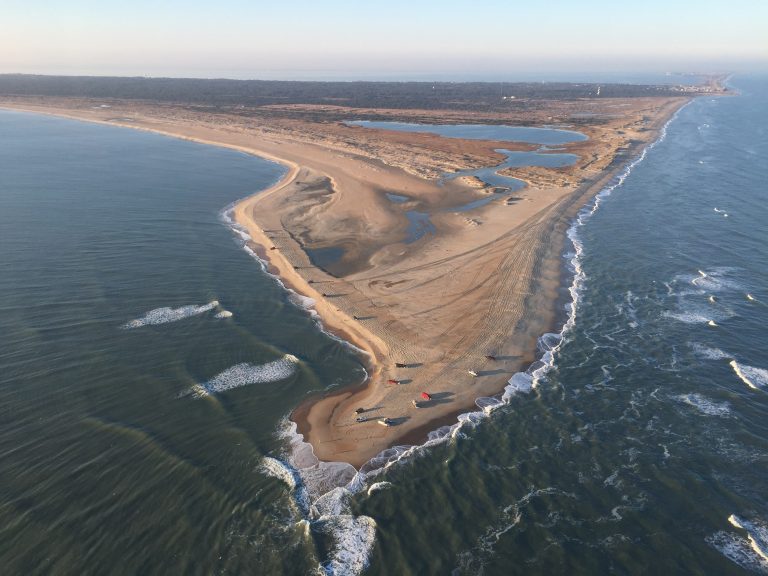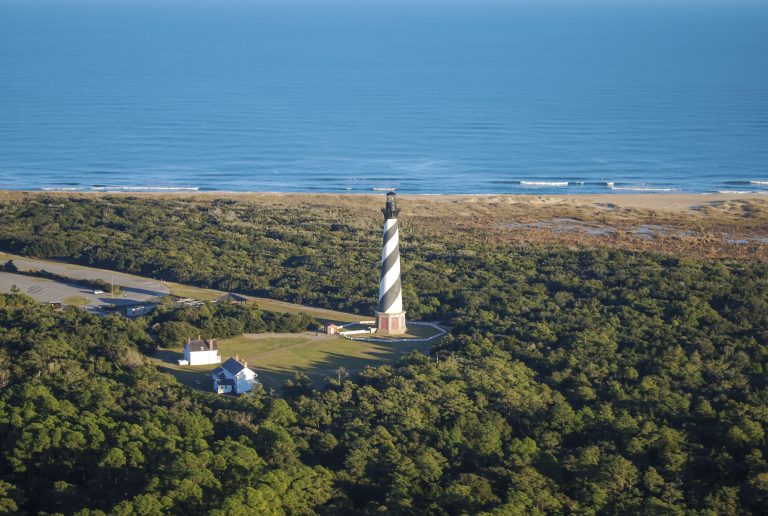The barrier islands of the Outer Banks are often thought of as true islands, but they are not.
As land masses go, the Outer Banks is a pretty recent addition to the earth’s geology. There are a number of theories about how and why they formed, but no consensus. There is consensus, however, on their age— estimates put their formation somewhere between 4000-5000 years ago.
Originally, they were farther east —that is something everyone agrees on—and the evidence of their migration is remarkable and fascinating.
Barrier islands are not islands in the traditional sense. Islands like Roanoke Island (home to the town of Manteo) and Colington (in Kill Devil Hills) are actually part of the North American land mass and are fixed permanently to it.
Barrier islands are sandbars that have risen above sea level. That is, of course, a very simple definition, but the bumper sticker that reads, “Life on a Sandbar” is not all that far off.
As anyone who has spent any time on the Outer Banks knows, it’s a pretty complex sandbar—Jockey’s Ridge rises 80-110’ above sea level, depending on wind conditions. Hiking through Nags Head Woods or Kitty Hawk Woods is almost like a hike through the mountains with surprising elevation gains and deep ravines.
But the Outer Banks are not actually anchored to anything, and they have been steadily migrating westward since they rose above the sea.

The process is simple—a major storm pushes waves over lower areas of the Outer Banks. As the waves cross the beach, they pick up sand and carry it to the other side of the barrier island, depositing it on the west side. Because of that, to be truly accurate in describing what happens to our beaches, they retreat—they do not erode.
For the past 80 or 85 years attempts have been made to stabilize the Outer Banks—the sand dunes that line the beach are not natural, and were put in place in the 1930 by the CCC—a government program to put young men and women to work during the Great Depression.
The process of overwash and accretion on the sound side has been occurring for approximately 4000-5000 years, and there is considerable evidence to support this.
Take a ride up to Carova, which is the town at the north end of the 4WD area of Corolla. The road is actually the beach, and a few miles north of where the paved road ends, tree stumps appear out of the sand, extending into the ocean and almost to the dune line.
They are the remnants of a maritime forest that once marked the western edge of the Outer Banks. Tree stumps can also be seen on the beach north of the S Curves in Rodanthe—more evidence of migration.
The movement of the Outer Banks is not just an ancient story; in modern times we have ample evidence that the shoreline continues to evolve.

When Cape Hatteras Lighthouse was built in 1870, it was far enough from the Atlantic Ocean that there was no concern about its location. By the 1930s it was apparent that something had to be done. Barriers and jetties were temporary at best, and did little to stop the ocean from marching toward the lighthouse. In 1999, Cape Hatteras Lighthouse and all the adjacent buildings were moved a half mile south and 1600’ from the sea.
The steady encroachment of the ocean in Duck, Kitty Hawk, Kill Devil Hills, Southern Shores, Nags Head and the north end of Buxton are areas where beach nourishment is able to be used to help to stabilize the shoreline. (Read more about the ongoing Outer Banks beach nourishment projects on the OBX.)
Will it work? In geologic time—say about 1000 years or so, probably not. In human terms, 25 or 30 years? The evidence suggests it will.
